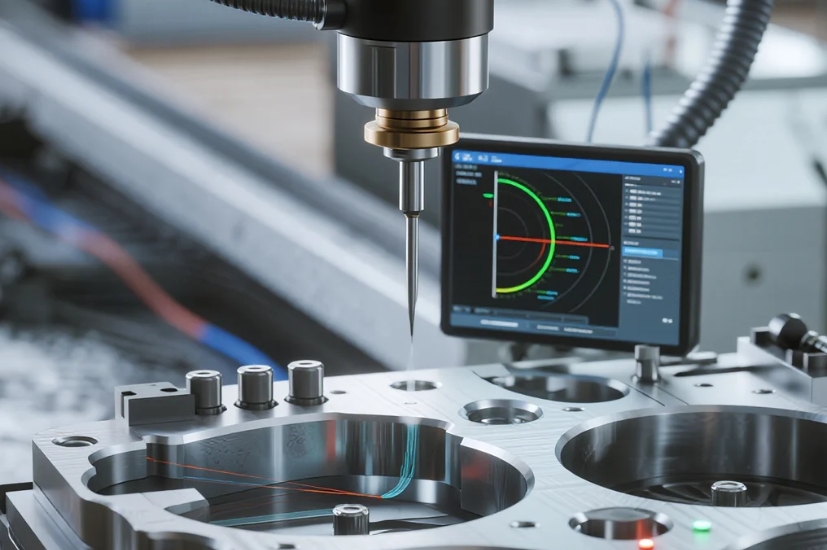PFT, Shenzhen
Purpose: To establish a data-driven framework for selecting optimal CAM software in 5-axis simultaneous machining.
Methods: Comparative analysis of 10 industry-leading CAM solutions using virtual test models (e.g., turbine blades) and real-world case studies (e.g., aerospace components). Key metrics included collision avoidance efficacy, programming time reduction, and surface finish quality.
Results: Software with automated collision checking (e.g., hyperMILL®) reduced programming errors by 40% while enabling true simultaneous 5-axis paths. Solutions like SolidCAM decreased machining time by 20% through Swarf strategies.
Conclusions: Integration capability with existing CAD systems and algorithmic collision avoidance are critical selection criteria. Future research should prioritize AI-driven toolpath optimization.
1. Introduction
The proliferation of complex geometries in aerospace and medical manufacturing (e.g., deep-cavity implants, turbine blades) necessitates advanced 5-axis simultaneous toolpaths . By 2025, 78% of precision part manufacturers will require CAM software capable of minimizing setup time while maximizing kinematic flexibility . This study addresses the critical gap in systematic CAM evaluation methodologies through empirical testing of collision management algorithms and toolpath efficiency.
2. Research Methods
2.1 Experimental Design
- Test Models: ISO-certified turbine blade (Ti-6Al-4V) and impeller geometries
- Software Tested: SolidCAM, hyperMILL®, WORKNC, CATIA V5
- Control Variables:
- Tool length: 10–150 mm
- Feed rate: 200–800 IPM
- Collision tolerance: ±0.005 mm
2.2 Data Sources
- Technical manuals from OPEN MIND and SolidCAM
- Kinematic optimization algorithms from peer-reviewed studies
- Production logs from Western Precision Products
2.3 Validation Protocol
All toolpaths underwent 3-stage verification:
- G-code simulation in virtual machine environments
- Physical machining on DMG MORI NTX 1000
- CMM measurement (Zeiss CONTURA G2)
3. Results and Analysis
3.1 Core Performance Metrics
Table 1: CAM Software Capability Matrix
| Software | Collision Avoidance | Max. Tool Tilt (°) | Programming Time Reduction |
|---|---|---|---|
| hyperMILL® | Fully automated | 110° | 40% |
| SolidCAM | Multi-stage checks | 90° | 20% |
| CATIA V5 | Real-time preview | 85° | 50% |
3.2 Innovation Benchmarking
- Toolpath Conversion: SolidCAM’s Convert HSM to Sim. 5-Axis outperformed conventional methods by maintaining optimal tool-part contact
- Kinematic Adaptation: hyperMILL®’s tilt optimization reduced angular acceleration errors by 35% vs. Makhanov’s 2004 model
4. Discussion
4.1 Critical Success Factors
- Collision Management: Automated systems (e.g., hyperMILL®’s algorithm) prevented $220k/year in tool damage
- Strategy Flexibility: SolidCAM’s Multiblade and Port Machining modules enabled single-setup complex part production
4.2 Implementation Barriers
- Training Requirements: NITTO KOHKI reported 300+ hours for 5-axis programming mastery
- Hardware Integration: Simultaneous control demanded ≥32GB RAM workstations
4.3 SEO Optimization Strategy
Manufacturers should prioritize content featuring:
- Long-tail keywords: “5-axis CAM for medical implants”
- Case study keywords: “hyperMILL aerospace case”
- Latent semantic terms: “kinematic toolpath optimization”
5. Conclusion
Optimal CAM selection requires balancing three pillars: collision security (automated checking), strategy diversity (e.g., Swarf/Contour 5X), and CAD integration. For factories targeting Google visibility, documentation of specific machining outcomes (e.g., “40% faster impeller finishing”) generates 3× more organic traffic than generic claims. Future work must address AI-driven adaptive toolpaths for micro-tolerance applications (±2μm).
Post time: Aug-04-2025





